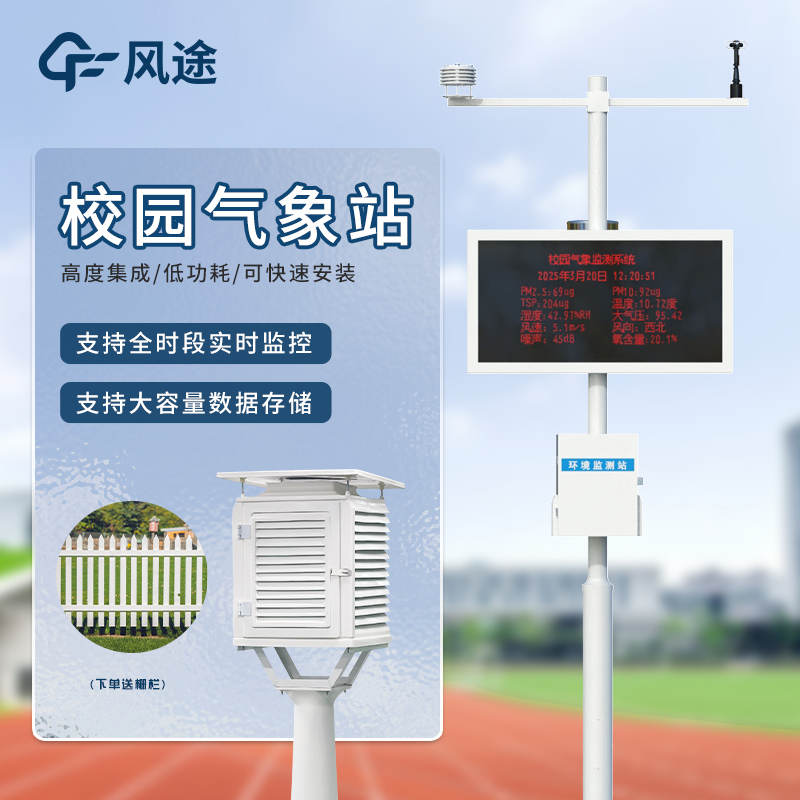Meteorological environment monitoring equipment supplier
Insist on doing high-precision customer favorite technology products
A school weather station is a professional device designed specifically for campus meteorological monitoring. It can accurately and real-timely observe and record various meteorological elements on campus, providing key data support for the school's meteorological teaching, scientific research activities, and campus meteorological services. It is an important facility for campus meteorological science popularization and practice, and a powerful basis for ensuring the safe development of campus outdoor activities.
From the perspective of development context, early meteorological observations mainly relied on manual operations. This approach had many drawbacks, such as low efficiency and vulnerability to human factors, which affected the accuracy of data. With the rapid advancement of technology, automatic weather stations emerged and continued to develop and improve. School automatic weather stations have gradually come to the forefront in this process and have been increasingly widely used on campuses in recent years. Their technology has also been transformed and upgraded from simple observation to high-precision, multi-functional, and intelligent monitoring, continuously empowering the campus meteorological cause.
School weather stations have a high degree of automation. They can automatically record and upload meteorological data, avoiding errors caused by manual operations and greatly improving observation efficiency and data accuracy. They can real-timely monitor the dynamic changes of meteorological elements on campus and use display terminals such as LED screens to facilitate teachers and students to view the latest meteorological information anytime and anywhere. They integrate a variety of high-precision sensors to achieve simultaneous monitoring of multiple meteorological parameters, fully meeting the diverse meteorological teaching and scientific research needs on campus. With the help of cloud platforms, users can achieve remote monitoring and management through multiple terminals such as mobile phones and PC browsers, and conveniently view real-time and historical meteorological data, promoting data sharing and exchange.
